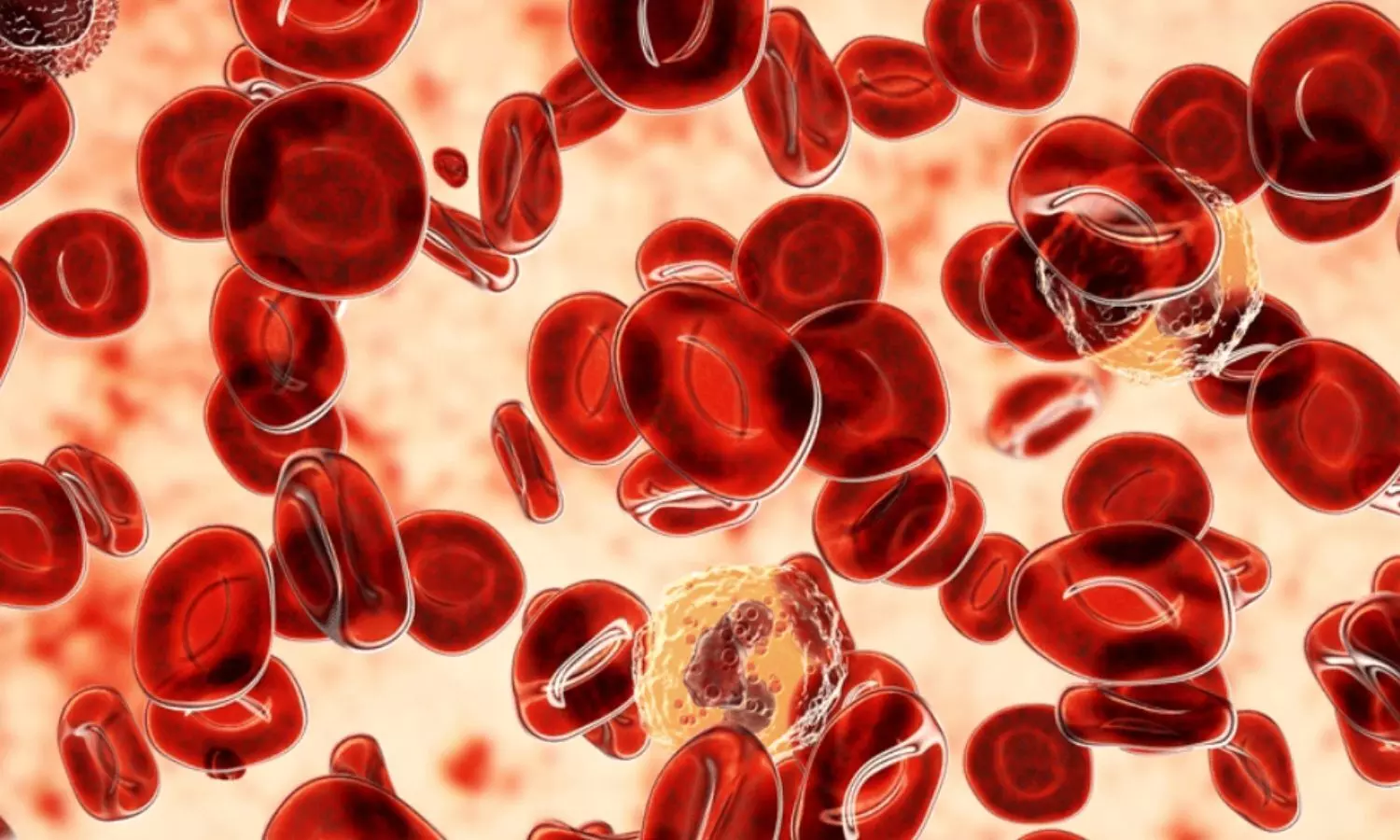Rusfertide effective for controlling RBCs overproduction in polycythemia vera: NEJM

USA: A recent multi-centre clinical trial published in the New England Journal of Medicine has shed light on the efficacy and safety of rusfertide, a hepcidin mimetic, in patients with phlebotomy-dependent polycythemia vera.
Marina Kremyanskaya, Tisch Cancer Institute, Icahn School of Medicine at Mount Sinai, New York, NY, and colleagues revealed that in patients with polycythemia vera, rusfertide treatment was linked with a mean hematocrit of less than 45% during the 28-week dose-finding period, and during the 12-week randomized withdrawal period, percentage of patients with a response was greater with rusfertide than with placebo.
“A novel treatment for polycythemia vera, a potentially fatal blood cancer, demonstrated the ability to control the overproduction of red blood cells, the hallmark of this malignancy and many of its debilitating symptoms,” the researchers reported.
Polycythemia vera is a chronic myeloproliferative neoplasm characterized by erythrocytosis. Rusfertide is an injectable peptide mimetic of the master iron regulatory hormone hepcidin, which restricts the availability of iron for erythropoiesis. There is no information on the efficacy and safety of rusfertide in patients with phlebotomy-dependent polycythemia vera.
The researchers enrolled patients in a 28-week dose-finding assessment of rusfertide in part 1 of the international, phase 2 REVIVE trial. Part 2 was a double-blind, randomized withdrawal period in which patients were assigned 1:1 to receive rusfertide or placebo for 12 weeks.
The primary efficacy endpoint was a response, defined by hematocrit control, phlebotomy absence, and completion of the trial regimen during part 2. Patient-reported outcomes were evaluated using the modified Myeloproliferative Neoplasm Symptom Assessment Form (MPN-SAF) patient diary (scores vary from 0 to 10, with higher scores indicating greater severity of symptoms).
The study led to the following findings:
- In part 1 of the trial, seventy patients were enrolled, and 59 were assigned to receive rusfertide (30 patients) or placebo (29 patients) in part 2. The estimated mean number of phlebotomies per year was 8.7±2.9 during the 28 weeks before the first dose of rusfertide and 0.6±1.0 during part 1 (estimated difference, 8.1 phlebotomies per year).
- The mean maximum hematocrit was 44.5±2.2% during part 1 as compared with 50.0±5.8% during the 28 weeks before the first dose of rusfertide.
- During part 2, a response was observed in 60% of the patients who received rusfertide as compared with 17% of those who received a placebo.
- Between baseline and the end of part 1, rusfertide treatment was associated with a decrease in individual symptom scores on the MPN-SAF in patients with moderate or severe symptoms at baseline.
- During parts 1 and 2, grade 3 adverse events occurred in 13% of the patients, and none of the patients had a grade 4 or 5 event.
- Injection-site reactions of grade 1 or 2 in severity were common.
“Rusfertide is a potentially effective treatment option for achieving and sustaining hematocrit control in polycythemia vera, reducing the use of phlebotomy and the occurrence of debilitating disease-related symptoms,” the researchers wrote.
“For patients with polycythemia vera, the hepcidin mimetic rusfertide, which restricts the availability of iron, might be effective for controlling erythrocytosis,” they concluded.
Reference:
Kremyanskaya, M., et al. (2024) Rusfertide, a Hepcidin Mimetic, for Control of Erythrocytosis in Polycythemia Vera. New England Journal of Medicine. doi.org/10.1056/NEJMoa2308809.
